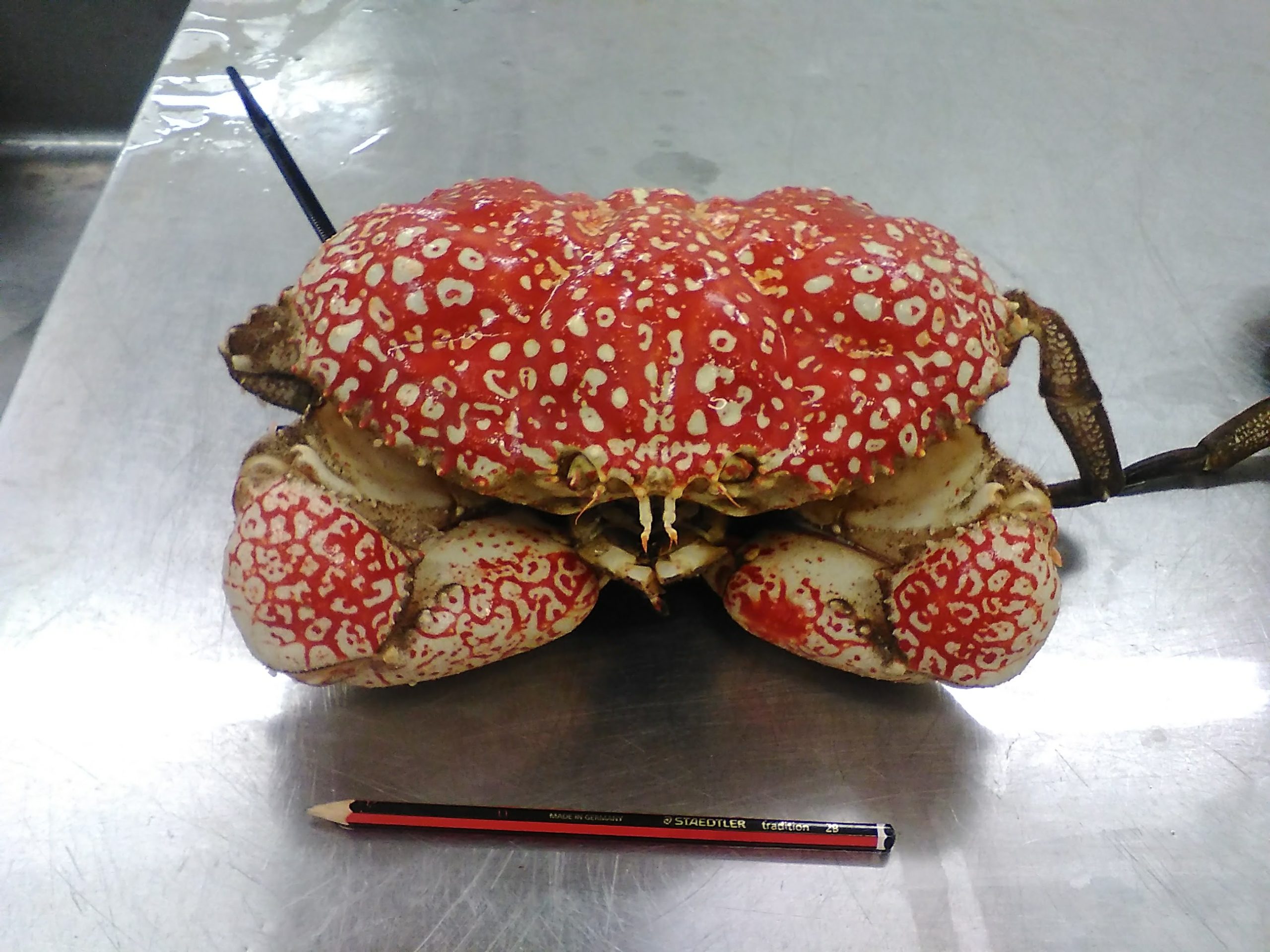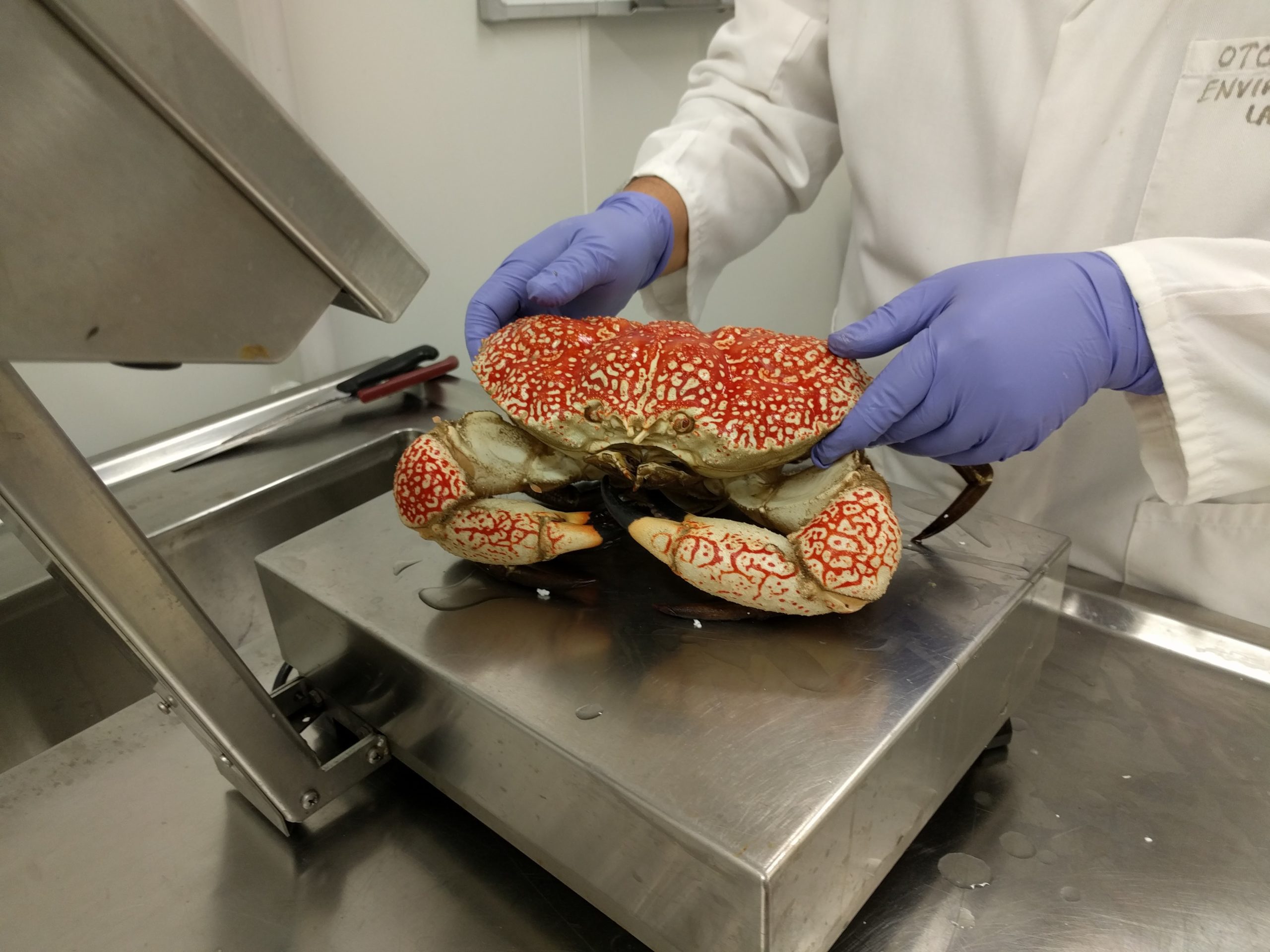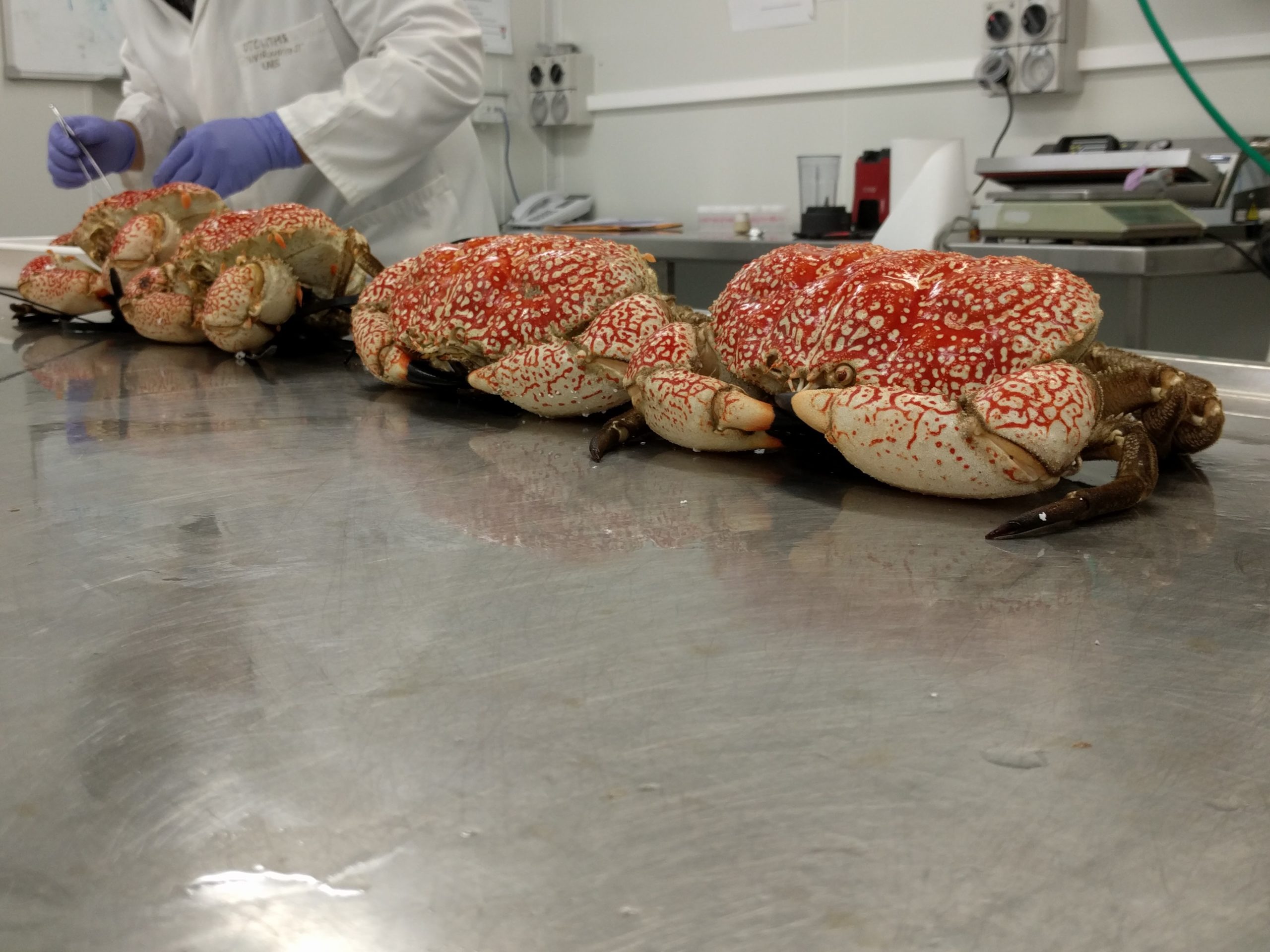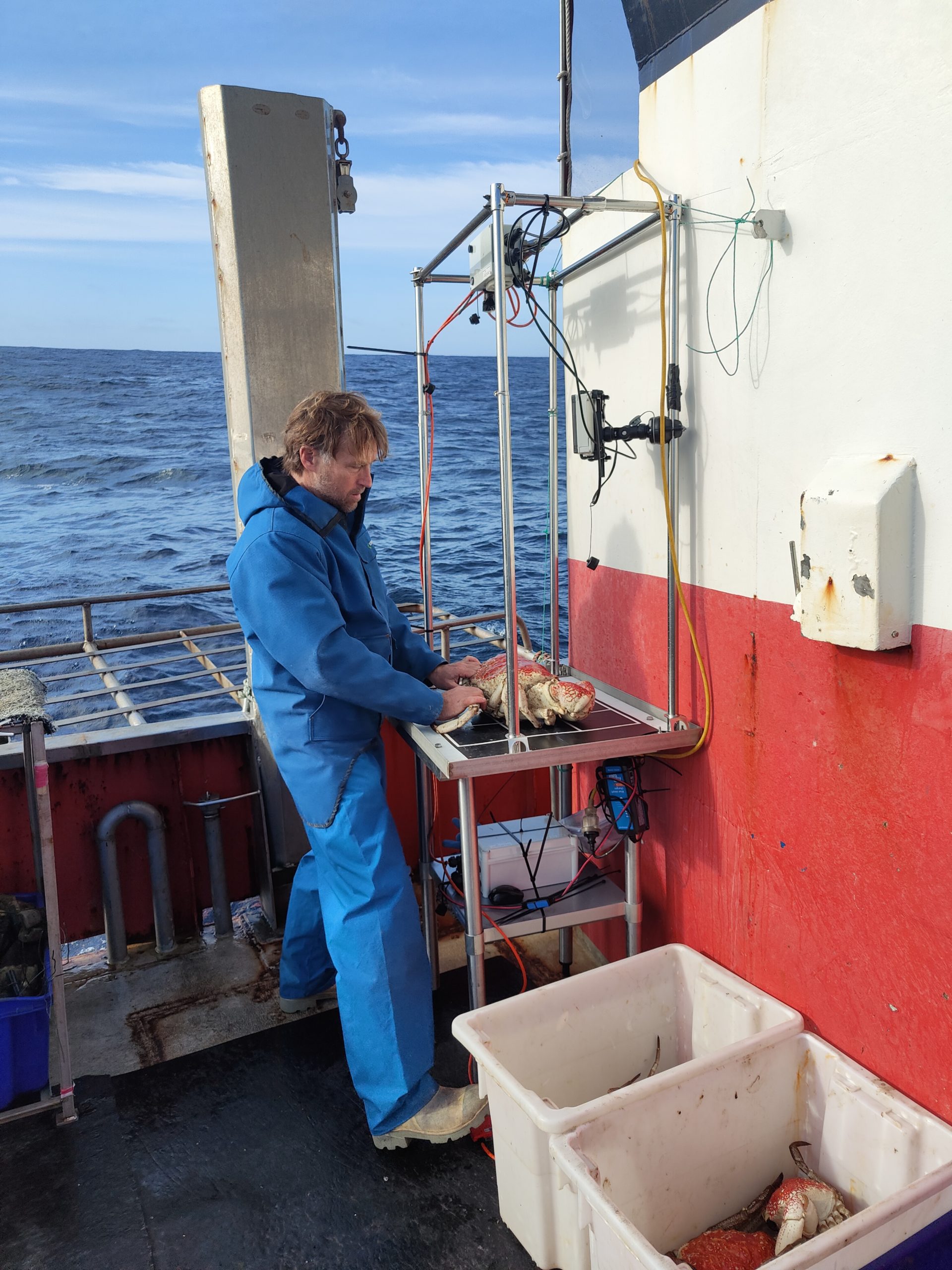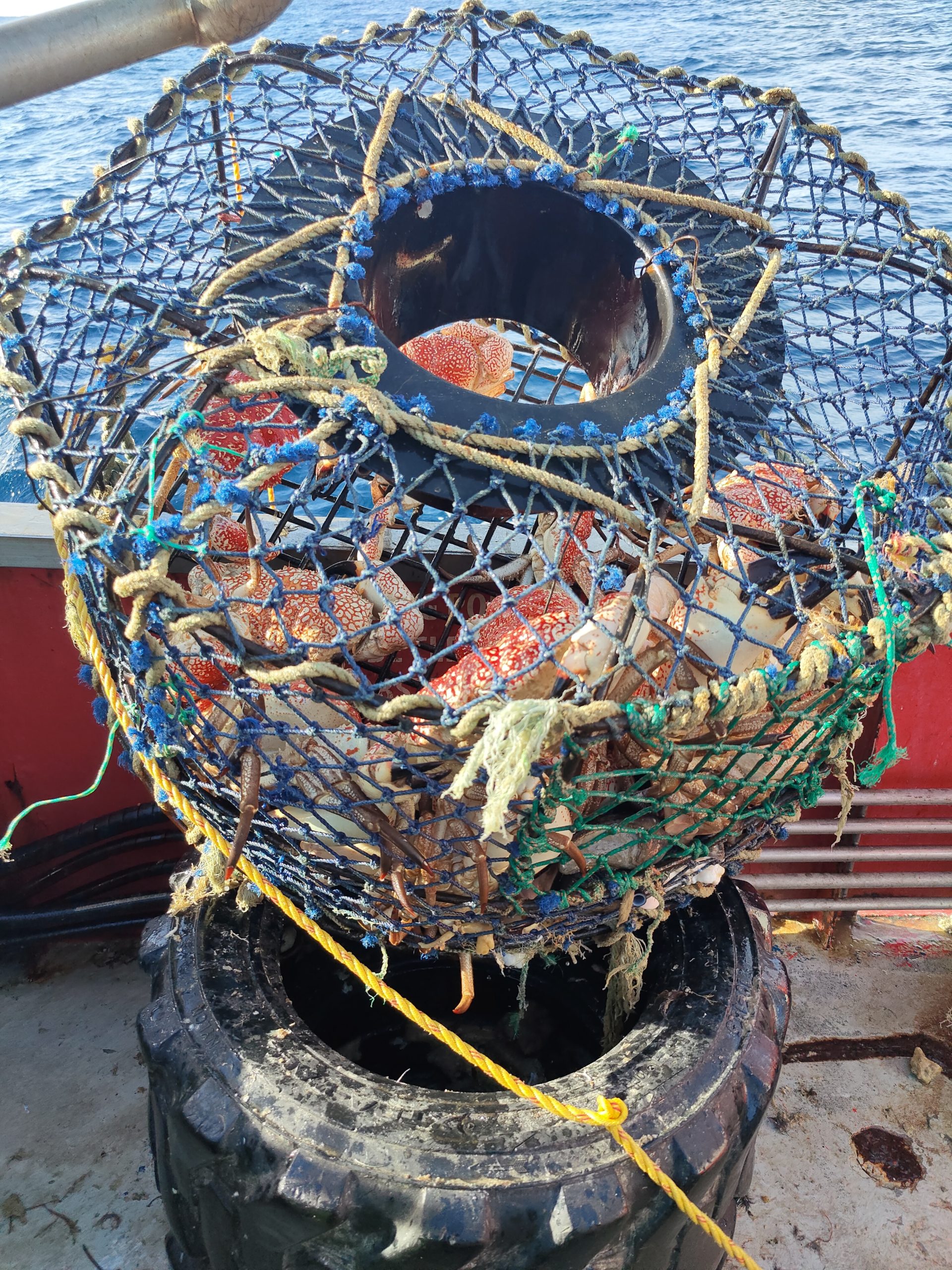Fishery Management
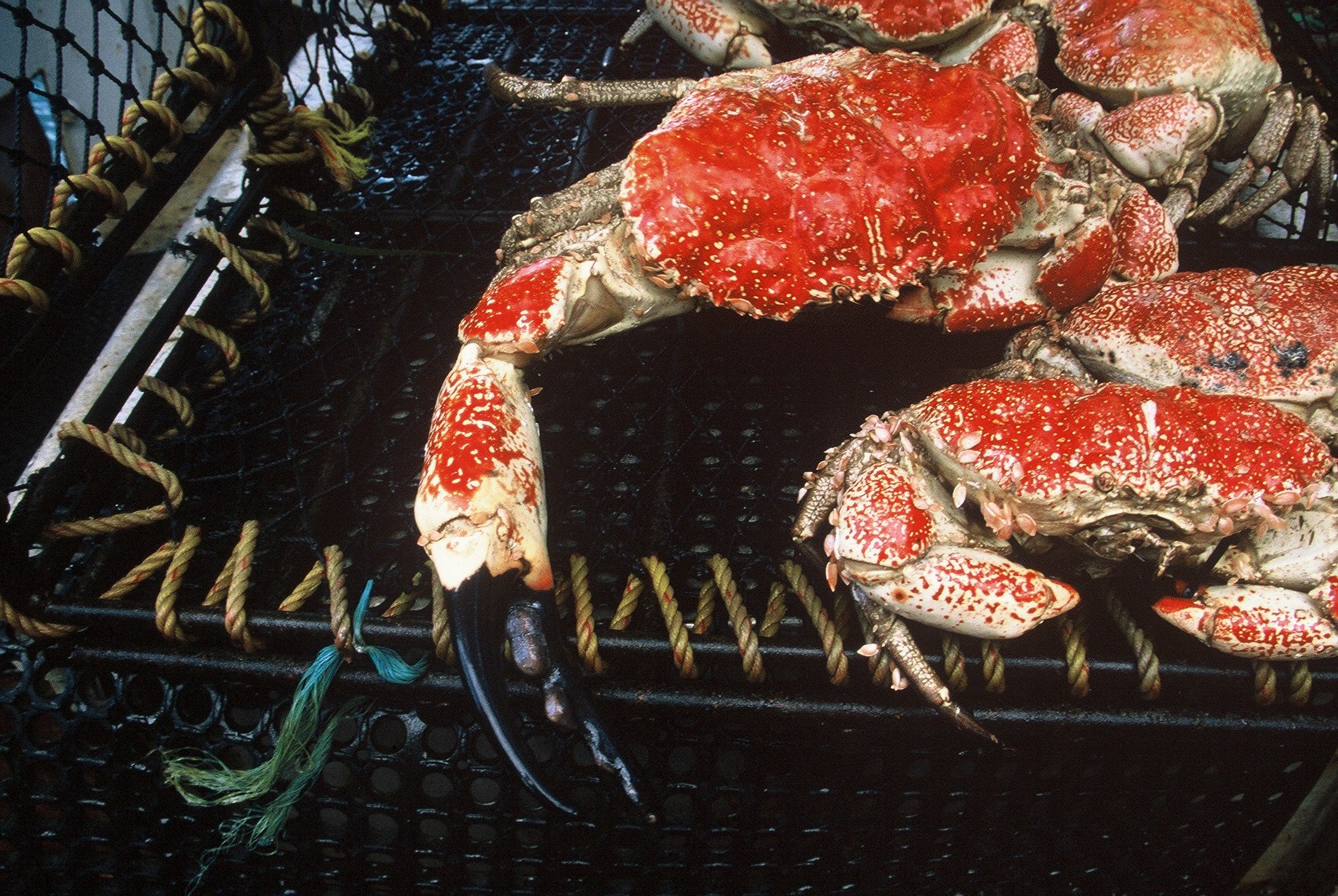
The Tasmanian Department of Natural Resources and Environment (NRE) manages the fishery with the Giant Crab Management Plan under the Living Marine Resources Management Act (1995). The entire fishery is managed by Tasmania under an Offshore Constitutional Settlement (OCS) between the Australian Government and the Government of Tasmania despite the majority of catch taken in Commonwealth waters.
The Giant Crab Fishery has 8 management areas. However, for stock assessments the data is pooled into state-wide Tasmanian assessment that is used for management decision making. Researchers at IMAS also pool the data into two regions East (Assessment Areas 1 – 4) and West (Assessment areas 5 – 8). While no management strategies are implemented on the two zones individually, the analysis allows researchers to identify any spatial concerns and subsequent need for spatial management.
Schematic boundaries of previous assessment areas for the giant crab fishery. In recent stock assessments the data from these assessment areas are pooled into a state-wide assessment and an assessment of the Eastern (Assessment Area 1 – 4) and Western (5 – 8) regions.
Giant Crab Management Plan
The Tasmanian Giant Crab Management Plan was introduced in 1999 (NRE, 1999) and provides the regulatory framework for the commercial fishery.
The plan contains the following objectives, strategies and performance indicators.
Major Objectives
- Maintain fish stocks at optimum sustainable levels by constraining the total catch and the size of individual giant crabs taken by the commercial sector;
- Sustain yield and reduce incidental fishing mortality by taking fish at a size likely to result in the optimum yield from the fishery, protecting under-size giant crabs, and minimising incidental fishing mortality as a result of fishing operations;
- Manage commercial fishing interactions by mitigating any conflict that results from competition between different fishing methods for access to shared fishing grounds;
- Provide socio-economic benefits to the community; and
- Provide high quality products.
Primary Strategies
- Limit the targeted commercial catch by setting a total allowable commercial catch (TAC) and using individual transferable quotas (ITQs) to allocate proportions of the TAC;
- Limit access to by-catches of giant crabs;
- Maintain minimum and maximum size limits and closures of the fishery for female giant crabs during the peak spawning period to conserve egg production, restrict fishing mortality on spawning or berried female giant crabs, and ensure a proportion of large males and females are returned to the water;
- Maintain escape gaps to reduce incidental fishing mortality; and
- Restrict the number of giant crab fishing vessels in the fishery and the number of giant crab traps that can be used from individual fishing vessels.
Performance Indicators and Reference Points
The giant crab management plan identifies (but is not limited to) a number of fishery performance indicators. Reference ranges defined for these indicators are deemed to represent the normal variation of the stocks and fishery. When the observed value of a performance indicator falls outside this range, a limit reference point or trigger point is said to have been exceeded, implying that some management action may be required. Reference points are exceeded when one or more of the following criteria are met:
- The total yearly catch does not exceed 90% of TAC in any year;
- Catch per unit effort (CPUE) for the State declines for two consecutive years;
- Catch per unit effort (CPUE) for any region declines by a total of 20% in two years;
- The bycatch of giant crabs taken by rock lobster fishers exceed 5 tonnes in any year; and
- The proportion of the catch above 5 kg or below 3 kg varies by more than 30% compared to the 1996/97 distribution.
Details on the current management controls for the Tasmanian Giant Crab Fishery is provided on the NRE website at the link:
Giant Crab Enhanced Data Collection
The lack of available data is one of the greatest challenges for the Tasmanian Giant Crab Fishery and has resulted in stock assessment models not being used to estimate biomass since the 2013/14 assessment season. A lack of biological information, such as length frequency data, is the primary issue limiting the application of the stock assessment model in Tasmania in recent years. Instead, CPUE trends are currently used to indicate biomass, however, CPUE has been declining since the inception of the Tasmanian Giant Crab Fishery and precautionary management strategies have been applied in response to the high uncertainty around biomass estimates. Similar declining CPUE trends and data limitations have been experienced in giant crab fisheries in South Australia and Victoria.
IMAS researchers are participating in a cross-jurisdictional research collaboration to improve the availability and quality of giant crab data to better inform stock assessments and management strategies. The information gathered in this study will be critical to ensuring the long-term sustainability of giant crab fisheries in South Australia, Victoria and Tasmania through improved monitoring of fish stocks using innovative technologies. The approaches for enhancing data collection being investigated by researchers in this study aim to increase the availability of information with minimal burden on fishers.
You can find out more information on this project at the link:


